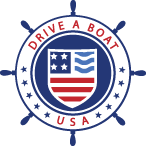Your Guide to Jet Ski Safety Requirements
Riding a jet ski can be exhilarating, but only if you survive the ride to go out again the next day.
It’s important to be familiar with common causes of accidents and injuries linked with PWC operation before heading out on the water – that way, you’ll know what to do to minimize the risk of a mishap.
Read our complete guide and be prepared to operate your personal watercraft safely and legally anywhere in the United States.
Common risks associated with jet skis
First, let’s go over the most common risks linked with jet ski operation:
Collisions
Busy waterways pose a danger of collisions with boats, other jet skis, and even swimmers, often due to operator inattention, excessive speed, or neglecting navigation rules.
Crashing into fixed objects like docks, buoys, or rocks can result in significant injuries, particularly when traveling at high speeds. Remember that even after falling off a jet ski, there’s a risk of colliding with your own watercraft if it continues moving.
Loss of control
Jet skis can be a bit tricky to handle because of how they’re designed. They can accelerate to high speeds very quickly, which can make them difficult to steer, especially if you don’t have much experience. Also, if you turn too sharply, you could easily fall off.
Unlike cars or even some boats, jet skis do not have regular brakes. To slow down, you have to ease off the gas or go into reverse (depending on your speed and the circumstances), so you need to plan ahead and have enough space. One more thing to know is that they don’t steer very well, or sometimes at all, when you’re going slowly, since the steering control on a PWC is directly linked to the propulsion mechanism.
Injuries from falls and ejections
When you fall off a fast-moving jet ski and hit the water, the impact can feel much harder than you might expect, almost like slamming into a solid surface. Sudden jerks and unexpected movements can also cause whiplash, a painful injury to your neck.
There’s a danger of cuts and scrapes if you’re thrown against the jet ski or nearby objects and unexpected impact can also lead to broken bones and twisted joints. Head injuries, including concussions, can be a risk if you are thrown, and in more serious cases, high-speed crashes can even damage your internal organs or spinal cord.
Drowning
Losing consciousness after an injury or being unable to swim after falling off can lead to drowning, even with a life jacket. Nonetheless, using an approved Type III life jacket (in the old system) or a Type I life jacket (in the new system) with appropriate age, buoyancy and activity specifications, is still the best way to protect yourself in case of immersion. U.S. Coast Guard-approved PFDs are required by law when operating a PWC or other motorized vessel.
Common factors in jet ski accidents
While you can never fully predict what might lead to an accident, it can help to know the most common circumstances surrounding jet ski incidents:
- Operator inexperience, error or inattention
- Excessive speed and reckless operation
- Alcohol and drug use
- Poor weather conditions
- Equipment malfunction
So, what can you do to operate your jet ski safely?
How to operate a jet ski safely
Stay safe by avoiding alcohol consumption, respecting speed limits and no-wake zones, and always checking for small craft advisories. Never operate a jet ski at night or in poor visibility, and avoid riding alone, especially in unfamiliar areas. Respect the capacity of the vessel and be extra careful if you have children with you.
Always carry the right type of emergency equipment, and learn how to reboard safely to avoid serious injury from a propellor strike.
You may also want to:
- Wear a Coast Guard-Approved Life Jacket (PFD) and other protective gear, such as a water sports helmet or eye protection. PFDs specifically designed for personal watercraft use offer more durability for high-speed water impacts.
- Take a state-specific boater safety course to learn proper operation and safety rules. California, New York, Florida and other states require PWC operators to complete a certified boating safety course. These courses teach standard rules of navigation (and right-of-way rules), safe operating practices, and emergency procedures. Even if not mandatory, taking a course is highly recommended for all operators.
- Be aware of your surroundings and maintain a safe distance from other watercraft and obstacles. Constantly scan the water for other vessels, swimmers, obstacles (like rocks, buoys, and docks), and potential hazards. PWCs can be fast and maneuverable, but this also means you can quickly encounter dangers if you’re not paying attention.
- Maintain your jet ski properly. Before each use, check the jet ski for any signs of damage, proper fluid levels (fuel and oil), and ensure that controls are functioning correctly.
- Be familiar with how your jet ski works so you know its limitations, especially in terms of turning and braking. Attach a safety lanyard (kill switch) to your wrist or life jacket before starting the engine. If you fall off, the lanyard will detach, automatically shutting off the engine and preventing the jet ski from continuing without you.
- Avoid reckless maneuvers. Don’t engage in wake jumping close to other vessels, spraying other boaters or swimmers, or making sharp turns at high speeds that could lead to loss of control or collisions.
Get your PWC certification with Drive A Boat USA
Drive A Boat USA offers boating safety courses that qualify you to legally operate a PWC in California, New York and Florida. Millions of boaters have followed our 100% online boater safety course and exam. Get started on your state-specific PWC certification today!

